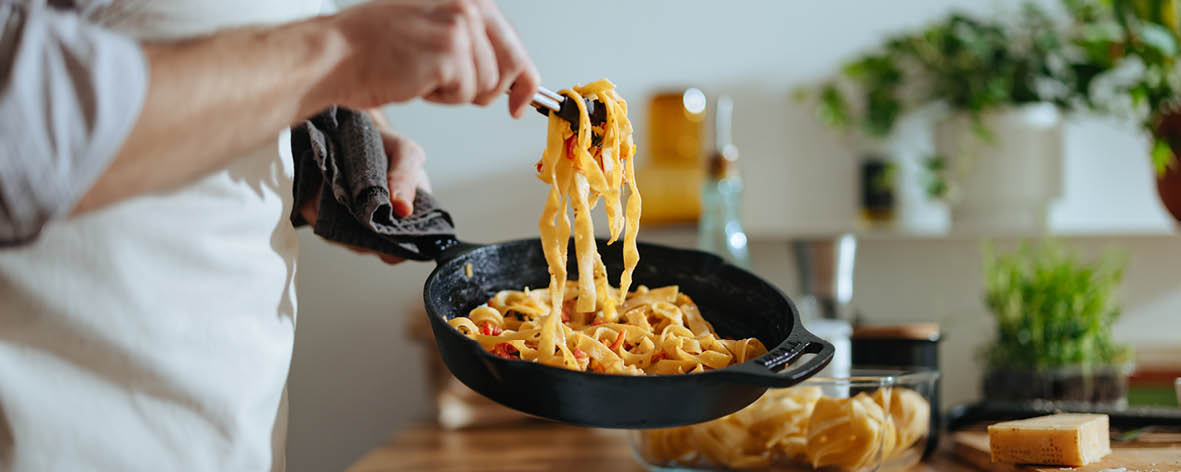Our secrets to achieving … perfect pasta

How much salt should you add to your pasta water? How do you stop it sticking together? Should you rinse your pasta? What about adding oil? Read on to answer these and other questions about cooking perfect pasta.
Pasta has become a cornerstone of family cooking in Australia ever since Italian migrants brought their delicious cuisine to our shores in the 1950s. There are so many pasta dishes, using whatever’s in season or to hand. Pasta is a fantastic flavour carrier and fills up hungry stomachs very economically.
There are a few tips to make your pasta perfect, though.
Salting your water
Traditional pasta dough doesn’t contain salt, so adding it to the cooking water is important to add flavour. While pasta does absorb flavour from its sauce, it may not be enough and for this reason it is important to start with a salty base.
Salting the water also slows the swelling of the starch particles when they come into contact with water (known as gelatinization) – which results in a less sticky pasta.
Add salt when the water is boiling to make sure it dissolves quickly. And how much? Italians say pasta water should be as salty as the sea – but this is only a turn of phrase. Boiling pasta in seawater would result in an extremely salty pasta. For a large pot of about 6 litres, you should add about 1.5 to 2 tablespoons of salt. This sounds like a lot – don’t worry, not all the salt is absorbed by the pasta and most of it will go down the drain with the water once cooking is finished.
Lots of boiling water
Only add your pasta to the water when the water is at a rolling boil. This will help dissolve the salt, and give the pasta enough space to move about in the water to prevent it sticking to itself. A good rule of thumb is 6 litres of water to 500g pasta.
Don’t add oil!
Please don’t add oil. If you have enough water in the pot, the pasta will not stick. Adding oil will make the pasta slippery and the sauce won’t cling to it.
Don’t overcook!
Take the minutes indicated on the packet as a guide and test your pasta a minute or two before the allocated time to see if it’s al dente. There’s no going back from overcooked, mushy pasta. Al dente means “to the tooth” which means that the pasta should still have a tiny bit of resistance to it when you bite into it. Cook your pasta uncovered and stir occasionally.
Drain and use immediately
When the pasta is done, drain it in a colander and reserve some of the water if the recipe calls for it - for example Carbonara sauce is made creamy not by adding cream but by emulsifying the egg and cheese mixture with a little cooking water.
Don’t rinse it. Just toss it immediately in the sauce you have prepared.
The one exception is if you are making a pasta salad. Drain it, rinse thoroughly with cold water and drain again.
Now you have cooking pasta down pat, try these pasta recipes from Hill Street’s recipe collection. Buon appetito!
Trenette with pesto, potato and green beans
Spiced chickpea and tomato pesto pasta

